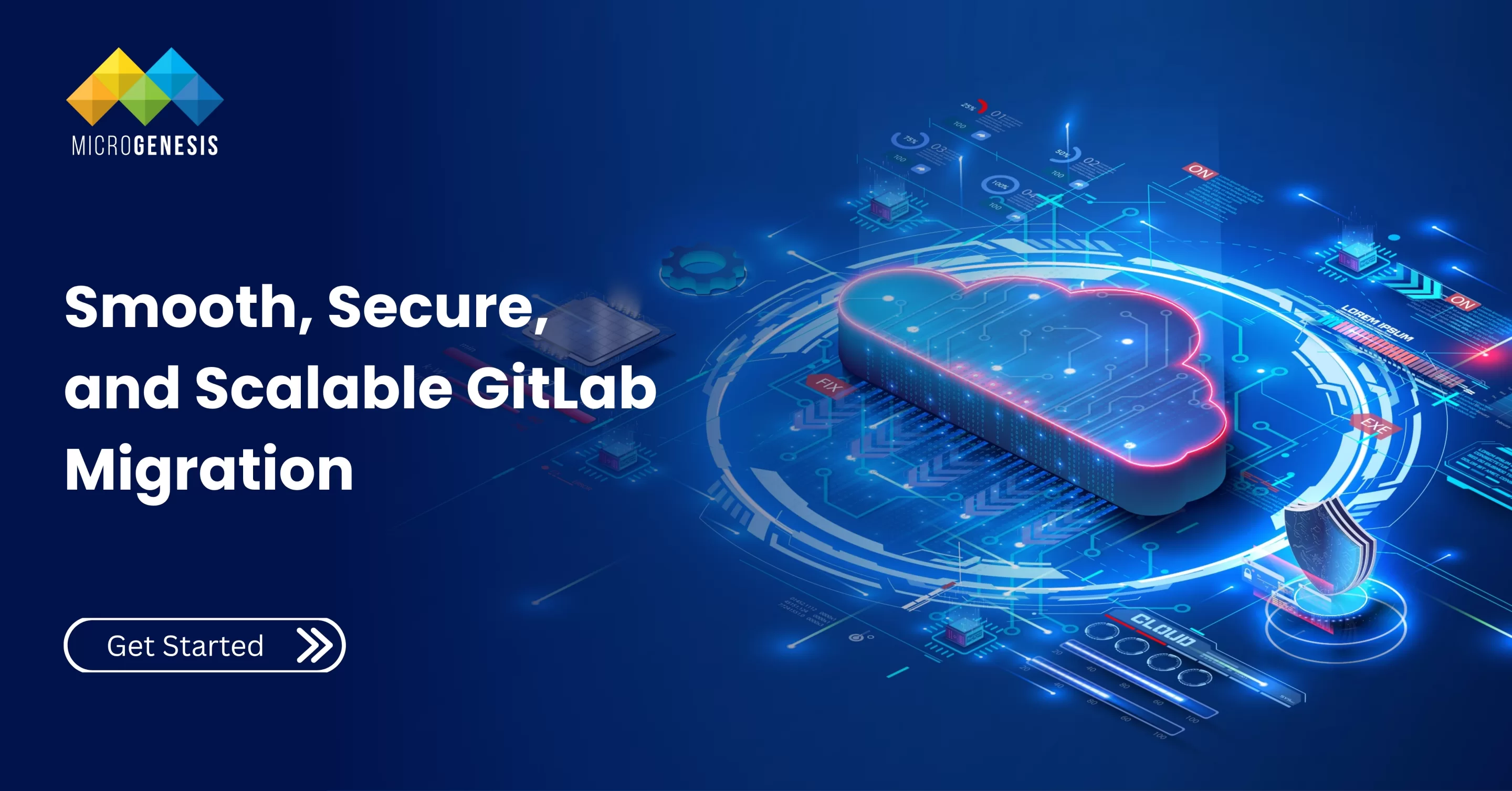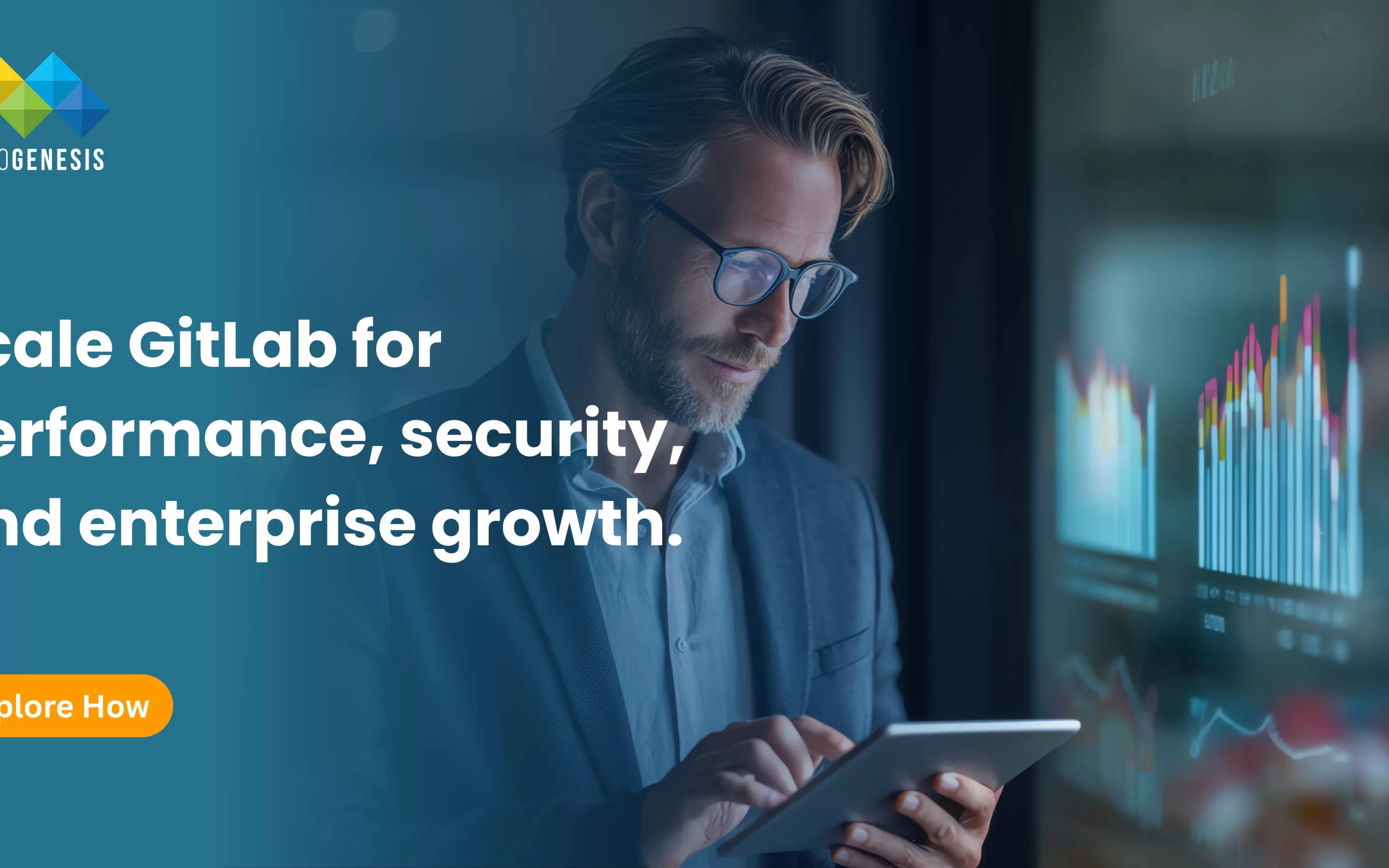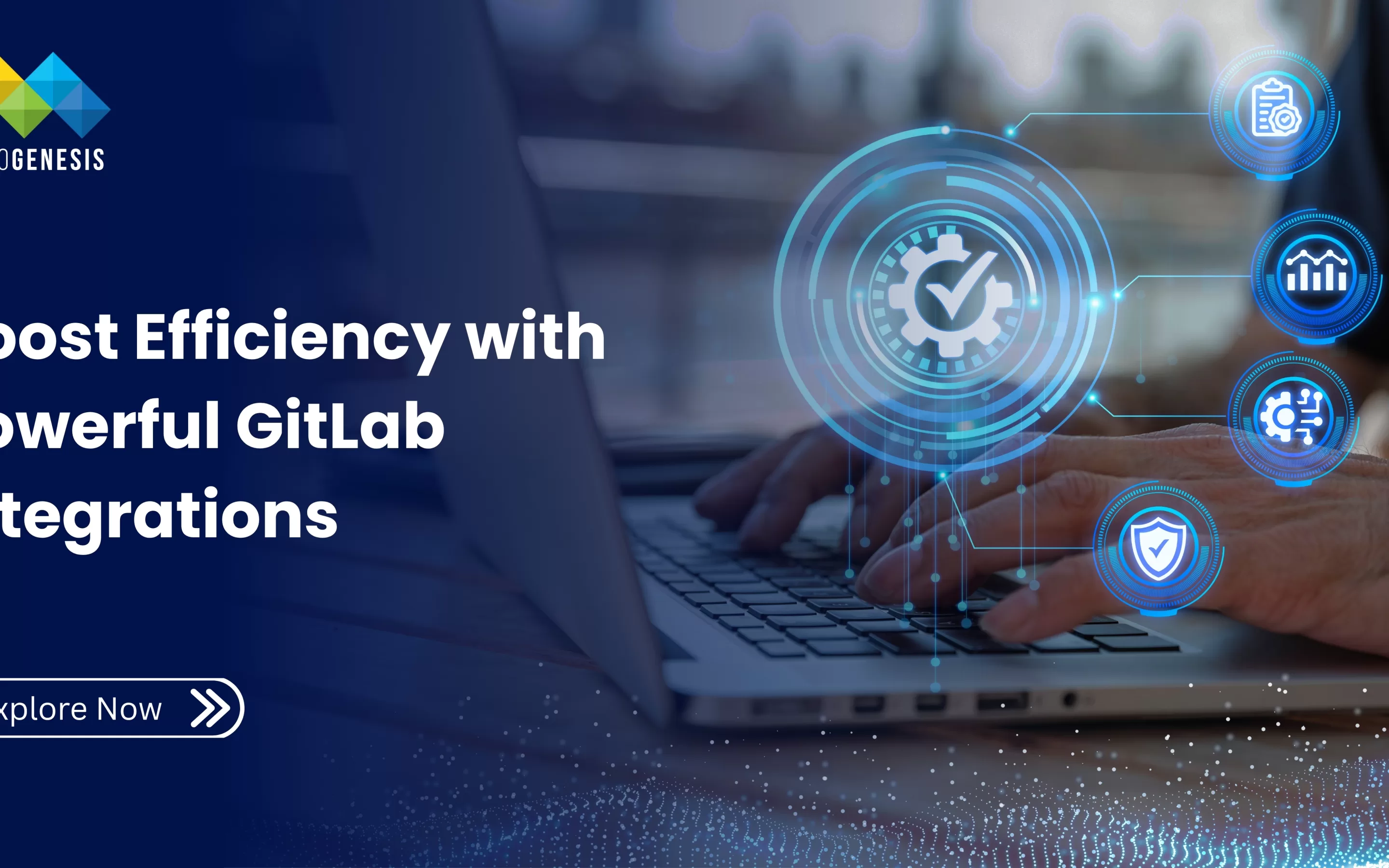Enterprises worldwide are on a mission to simplify, secure, and accelerate software delivery. Yet, many still rely on disjointed DevOps toolchains — one platform for source control, another for CI/CD, and a third for security scanning or project tracking. Over time, this fragmentation leads to integration headaches, compliance gaps, and escalating maintenance costs.
Enter GitLab, the all-in-one DevSecOps platform. By merging code management, automation, security, and collaboration into one system, GitLab helps organizations streamline development pipelines and achieve visibility from idea to deployment.
However, the journey to GitLab is not merely technical — it’s organizational. Migrating to a unified DevSecOps platform requires careful planning, phased execution, change management, and governance alignment.
This blog provides an in-depth guide to help enterprises migrate to GitLab successfully — from initial assessment to full adoption — while avoiding common pitfalls along the way.
1. Why Enterprises Are Migrating to GitLab
1.1 Fragmentation and Complexity
Traditional DevOps environments often consist of multiple tools — GitHub for code, Jenkins for CI/CD, Jira for tracking, and SonarQube for scanning. While powerful individually, these tools create data silos, integration issues, and inconsistent workflows.
GitLab solves this by unifying everything into a single platform, reducing complexity and integration overhead.
1.2 Security and Compliance Integration
In a world of escalating cyber threats and strict data regulations, security can no longer be an afterthought. GitLab integrates DevSecOps principles directly into the development lifecycle:
- Built-in vulnerability scanning (SAST, DAST, dependency, container)
- License compliance tracking
- Audit logs and RBAC controls
- Policy-as-code and compliance dashboards
This ensures continuous governance without slowing down innovation.
1.3 Reducing Total Cost of Ownership (TCO)
Tool sprawl often means paying multiple licenses and maintaining several systems. GitLab’s single-license model lowers costs, reduces maintenance effort, and simplifies vendor management.
Example: A telecom enterprise consolidated six DevOps tools into GitLab, reducing software costs by 38% while improving deployment frequency by 60%.
2. Pre-Migration Planning: Setting the Foundation
The success of a GitLab migration depends on a well-planned foundation. Before touching any repositories, teams must understand their current ecosystem and define clear objectives.
2.1 Assess the Current Environment
Conduct a toolchain inventory to map out existing systems:
- Source control: Bitbucket, GitHub, Azure Repos
- CI/CD: Jenkins, Bamboo, TeamCity
- Issue tracking: Jira, ServiceNow
- Security tools: SonarQube, Snyk
Identify:
- Number of repositories and their dependencies
- CI/CD jobs, triggers, and configurations
- Active users and permissions
- Integration points with external systems
Deliverable: A full migration inventory report identifying what to migrate, what to retire, and what to refactor.
2.2 Define Goals and KPIs
Common migration objectives include:
- Centralizing tools under GitLab
- Accelerating delivery by automating pipelines
- Improving compliance and traceability
- Reducing operational costs
Measure success using clear KPIs such as:
- Reduction in toolchain costs (%)
- Increase in release frequency (%)
- Mean time to recovery (MTTR) improvement
- Reduction in security vulnerabilities
2.3 Engage Stakeholders Early
Involve development, security, and operations teams from the start. Executive buy-in is crucial to align migration with strategic business goals. Cross-functional collaboration, supported by expert DevOps consulting, ensures everyone understands the “why” and “how” behind the migration — fostering alignment, efficiency, and long-term success.
3. Designing a GitLab Migration Strategy
3.1 Choose a Migration Approach
| Approach | When to Use | Pros | Cons |
| Lift and Shift | For small, low-risk projects | Fast migration | May not leverage GitLab-native features |
| Refactor | When optimizing pipelines for scalability | Takes full advantage of GitLab capabilities | Requires more time and expertise |
| Hybrid / Phased | For large enterprises | Reduces disruption; allows testing | Requires careful coordination |
A phased approach is ideal: begin with non-critical repositories to validate tools, then expand to core systems once confidence grows.
3.2 Define a Governance Model
Establish governance policies for:
- Access control (RBAC)
- Branching strategies
- Merge request approval workflows
- Security and compliance scans
Governance ensures consistent quality and prevents misconfigurations during migration.
3.3 Conduct a Pilot Project
Start with a proof-of-concept (POC). Select a small, representative project to test GitLab’s capabilities, validate configurations, and document lessons learned.
This early win builds confidence and provides insights for broader rollout.
4. Preparing for Migration
4.1 Build a Migration Team
A cross-functional migration team typically includes:
- Project Manager – oversees milestones and stakeholder communication
- DevOps Engineers – configure pipelines, runners, and integrations
- Developers – test migrated repositories and validate performance
- Security Specialists – ensure compliance and data protection
- Change Manager – handle user training and adoption
4.2 Audit and Clean Data
Before migration, remove obsolete repositories, stale branches, or deprecated users. Cleaning up prevents unnecessary clutter and reduces migration complexity.
4.3 Backup and Documentation
Always back up repositories, configurations, and metadata before migration. Create a rollback plan and test restores to ensure data recovery readiness.
4.4 Prepare Infrastructure
Set up GitLab’s target environment:
- GitLab SaaS for managed hosting and scalability
- Self-managed GitLab for private or regulated industries
Configure runners (shared or dedicated), network connectivity, and security protocols.
5. Executing the Migration
5.1 Repository Migration
Use GitLab’s built-in importers or APIs to migrate repositories from platforms like GitHub or Bitbucket.
Maintain:
- Commit histories
- Branches and tags
- Git LFS objects (for large files)
Validate migrated data using GitLab’s comparison tools.
5.2 CI/CD Pipeline Migration
Convert CI/CD configurations into .gitlab-ci.yml files:
- Translate Jenkins or Bamboo jobs into GitLab stages (build → test → deploy).
- Use variables and templates for reusability.
- Integrate code scanning and testing at each stage.
Pilot one pipeline first, then replicate configurations across projects.
5.3 Issue and Wiki Migration
Use GitLab APIs or migration tools to import:
- Issues, epics, and milestones
- Labels, assignees, and priorities
- Wiki pages and project documentation
Recreate agile boards to match existing workflows.
5.4 Integration Setup
Re-establish connections to external systems:
- Cloud Platforms: AWS, Azure, GCP
- ChatOps: Slack, Microsoft Teams
- Monitoring: Prometheus, Datadog
Test all integrations post-migration to confirm proper functionality.
6. Common Migration Pitfalls
6.1 Underestimating Complexity
Migrating pipelines, permissions, and integrations is often more complex than expected.
Solution: Conduct thorough discovery and start small with pilot projects.
6.2 Skipping Testing
Unvalidated pipelines can fail post-migration.
Solution: Create staging environments and conduct end-to-end testing before production rollout.
6.3 Ignoring Security
Misconfigured permissions or missing encryption can expose vulnerabilities.
Solution: Apply RBAC, enable 2FA, and run post-migration security scans.
6.4 Poor Communication
Resistance from teams is common when migration is top-down.
Solution: Communicate the value, involve users early, and highlight “quick wins.”
6.5 Not Using Partner Expertise
DIY migrations often miss optimization opportunities.
Solution: Engage certified GitLab Consulting Partners for architecture design, automation, and governance support.
7. Post-Migration Optimization
Migration is only the first step. Continuous optimization ensures lasting value.
7.1 Validate and Benchmark
After migration, verify:
- Repository integrity
- Pipeline functionality
- Security and compliance scans
Compare pre- and post-migration metrics to benchmark improvements.
7.2 Optimize Performance
- Enable caching and parallel builds for faster CI/CD.
- Use autoscaling runners for peak workloads.
- Leverage Kubernetes for container orchestration.
7.3 Strengthen Security and Governance
Implement:
- Role-based access control (RBAC)
- Approval workflows for code merges
- Scheduled vulnerability scans and compliance audits
7.4 Monitor and Report
Use GitLab’s analytics dashboards and integrations with Prometheus/Grafana to track:
- Deployment frequency
- MTTR
- Pipeline efficiency
Visualized metrics help maintain continuous improvement.
7.5 Foster Adoption
Conduct hands-on training and workshops to help users embrace GitLab’s features — issue tracking, merge requests, wikis, and CI/CD customization.
Encourage feedback loops to refine practices continually.
8. Measuring Migration Success
Evaluate success through metrics that reflect both technical performance and business impact:
| Metric | Definition | Expected Outcome |
| Deployment Frequency | How often code reaches production | 2–3x improvement |
| Change Lead Time | Time from commit to deployment | 30–50% reduction |
| MTTR (Mean Time to Recovery) | Speed of recovering from failure | 40% improvement |
| Change Failure Rate | Percentage of faulty releases | Under 5% |
| Toolchain Cost Reduction | Savings from consolidation | 25–40% |
Tracking these KPIs demonstrates ROI and validates GitLab’s effectiveness as a single-source DevSecOps platform.
9. The Role of GitLab Partners in Migration
GitLab Consulting Partners provide expertise, tools, and frameworks to simplify complex migrations. They help organizations:
- Assess readiness and architecture
- Plan and execute phased migration
- Integrate security and compliance automation
- Provide ongoing managed services and optimization
Partner Advantage
Working with certified partners reduces migration time by up to 40% and eliminates rework through proven methodologies.
Example:
A logistics company migrated 800 repositories and 200 pipelines with partner assistance. Through automation and phased rollout, they achieved:
- 60% faster deployments
- 35% lower tool maintenance cost
- 100% visibility across teams
10. Future of Migration: Intelligent and Automated
10.1 AI-Assisted Migration
Emerging tools use AI to automate migration mapping, pipeline conversion, and post-migration validation — minimizing manual errors.
10.2 Policy-as-Code Governance
Future GitLab versions will expand policy automation, enabling dynamic compliance enforcement across projects.
10.3 Multi-Cloud and Hybrid Integration
GitLab continues to enhance flexibility for enterprises operating across AWS, Azure, and on-premises systems — enabling consistent DevSecOps workflows everywhere.
Dig Deeper: Mastering Integration Manager Workflows & Pull Requests with Git and Mercurial: A Complete Guide
10.4 Continuous Modernization
Migration is not the end — organizations must continuously modernize pipelines, adopt GitLab innovations (like GitLab Duo AI), and realign processes with evolving business needs.
Conclusion
Migrating to GitLab is not simply a shift in tools — it’s a strategic transformation. It modernizes how teams collaborate, integrates security seamlessly, and replaces silos with unified visibility.
By embracing a structured approach — assessing, planning, executing, and optimizing — organizations can achieve a smooth transition and immediate value realization. Avoiding common pitfalls, enforcing governance, and leveraging certified GitLab Partners and experienced digital transformation consultants further ensures sustainable DevSecOps maturity.
The result?
Faster releases, lower costs, stronger compliance, and a culture of continuous innovation — all powered by GitLab.
With MicroGenesis, a trusted DevOps services provider and certified GitLab Partner, your migration to GitLab won’t just modernize your development processes; it will redefine how your enterprise delivers value, drives collaboration, and accelerates digital transformation in the modern age.




